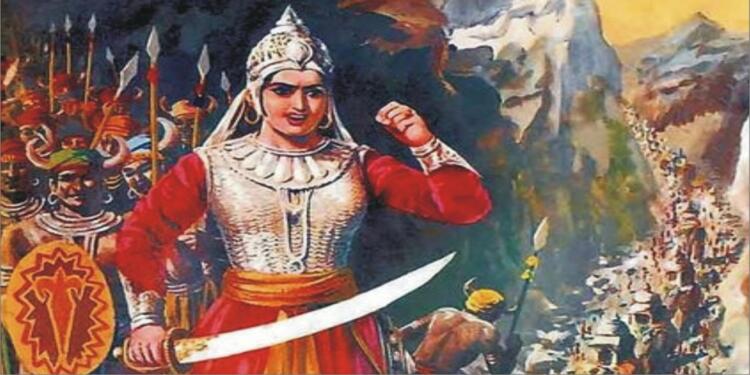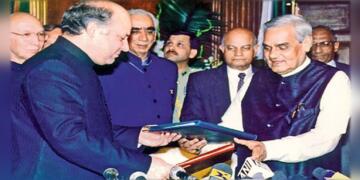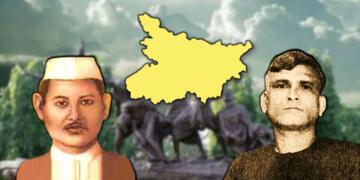Winning and losing are part of a war but it’s the size of war in a warrior that makes legends of them. As some wise man once remarked – well begun is half done, similarly in wartime, well fought is half the battle won. Bharat has seen its share of heroes who laid down their lives while saving the dignity of the motherland.
History has sidelined women to the sidelines. War, as the west and even the Arabs call it, is a man thing. That’s why the Western and the Arabian world doesn’t have many heroines to boast of. But India is different in that regard. In a country whose presiding deity of war and warfare is Devi Durga, a woman, female warriors are only the natural order. The land of Durga produced Rani Durgavati, who redefined bravery on her own terms by fighting the mighty Mughal Army of Akbar.
Rani Durgavati: The Daughter of Kalinjar And The Queen of Gondwana
Born on October 5, 1524 AD, Rani Durgavati was the daughter of Kalinjar King Keerat Rai Chandel. She was trained in horse riding and sword fighting from a very tender age. As she learnt the tough art of battling, she was also hospitable, charitable and a kind-hearted woman. She upheld her family tradition by taking a keen interest in art and literature, promoting them through various temples in Khajuraho and other places.
Stories of her bravery, intellect, and beauty soon spread across Kingdoms and reached Dalpat Shah, the then King of Gondwana. Dalpat Shah had met Durgavati on several occasions. Some stories say that Dalpat protected her from a tiger while she was out hunting. Their story is a fairytale royal Romance where Dalpat Shah sent a proposal to Keerat Rai requesting to wed her, which was rejected by Keerat Rai on grounds of caste.
However, Durgavati had different beliefs. She considered Dalpat equal with Rajputs for his grandeur and valour. The Kingdom of Gondwana had been stopping Mughals from invading Southern regions in India and Dalpat Shah was a respected King among neighbouring kingdoms. Taking the rejection as an insult, Dalpat Shah attacked the fort of Kalanjar eventually forcing Keerat Rai to agree for the wedding. Durgavati was now Rani Durgavati, the powerful queen of a flourishing kingdom at its peak.
Also Read: Kalinjar Durg – A fort with infinite stories
Rani Maintained Rajput’s valour
Rani gave birth to Bir Narayan in 1545, a gutsy boy who would go on to fight Mughals at a tender age. Years passed and as destiny had it, Dalpat Shah met an untimely death in 1550, leaving Rani Durgavati to take care of Gondwana, which she did like a true queen. Rani ran the kingdom with as much care as Dalpat would have done himself, fuelling trade, promoting art and literature, and safeguarding the state’s interest above else.
Gondwana was the eyesore of the Islamic forces. Baz Bahadur, the grandson of Sher Shah Suri and one among the avaricious neighbouring kings, attacked Gondwana. The attack was repelled by Rani Durgavati and the king had to retreat in ignominy.
Rani crushed Mughal Army in 1562
The attack by Baz Bahadur was only the first of the many battles that Rani was destined to face. Lured by the prosperity of Rani Durgavati’s kingdom, Islamist ruler Akbar sent his army under the leadership of Asaf Khan to annex the kingdom.
Rani Durgavati smashed Mughal ambitions to smithereens, in the valley of Narrai that had the mighty Narmada on one side. Despite Rani’s efforts for a peaceful settlement, Asaf Khan and Akbar had their eyes set on Gondwana’s treasury.
Rani was aware of the Mughal army and its strength. A direct confrontation with the mighty Mughal army was ritual suicide. Deewan Beohar Adhar Simha warned her of unfavourable consequences, but the Gondwana Queen was made of a different matter. She developed a defensive strategy to face the Mughals in terrain with an advantage, Narrai valley surrounded by hills and rivers was the perfect spot.
Mughals attacked her army from two ends, anticipating an easy victory over an army led by a woman. Rani’s army fought heroically pushing the Mughals to retreat. Mughals ran for dear life with their tails between their legs.
Also Read: The history of India’s Flags – From Kesariya to Tiranga
Rani chose death over captivity
The dark clouds weren’t past yet. Rani was proactive in anticipating the reinforcement that Asaf Khan would receive from Mughal headquarters. She insisted on attacking Khan’s troops during midnight, which unfortunately was rejected by other members of the council. Irrespective of the outcomes, Rani fought to uphold the armour, pride, and honour of Rajputana.
The war conch was blown. The Sun rose with its orangey glory. Durgavati, the Rani, stood on the hillocks raising her sword high, calling on enemies to quench the thirst of her sword.
A dagger dangled honourably beside her all the while, witnessing this piece of history take shape.
She valiantly fought to defend her land from the Mughal army. She was riding on Sarman, her elephant. A rogue arrow struck her; then another. Her neck and temple were bleeding. She fell unconscious.
When she regained her senses, she witnessed her army, most dead, some on the ground and the rest still giving a scare to the Mughals. She knew the battle was lost but she was not going to give the Mughals the joy of dishonouring her.
“Take this dagger and kill me,” she asked her Mahout.
The Mahout was torn over duty and honour – “How could I kill my Queen?” he thought.
“Swing this dagger, damn it! Your Queen commands!” she shouted.
The trembling Mahout couldn’t muster the courage.
Rani Durgavati stood up for one last time, took a good look at her kingdom, unsheathed the dagger and buried it deep in her chest. She chose to embrace death over surrendering to the army of Asaf Khan, the General of Akbar.
Rani Durgavati forced the Mughal army to move back three times but at last, fate had something else in her mind. She killed herself on 24 June 1564 and became immortal for all eternities to come.
Support TFI:
Support us to strengthen the ‘Right’ ideology of cultural nationalism by purchasing the best quality garments from TFI-STORE.COM


































